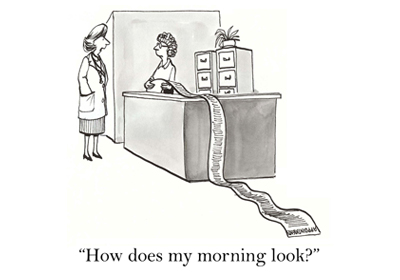As a leader, of an informal group, a virtual or actual team, a whole business or a large organisation, how much do you understand about how your ‘organisation’ works? Not its finances, its published structure, its production cycle – what we’re focusing on here covers people issues, culture, mindsets, ‘attitudes’, conflict and perceptions. It’s an area of team or organisational life that leaders often regard as a bit of a mystery – one which gets solved only by luck (you recruit the right people) or effort (you troubleshoot constantly).
Perhaps these sound familiar to you?
- “Nobody shows any initiative – it’s like managing a bunch of children.”
- “Why can’t I get people to do what I want them to do?”
- “Unless I watch them like a hawk, they can’t be trusted to behave in accordance with our values.”
- “I do everything I can to look after them, yet they still complain about me behind my back.”
What you need is a way of understanding how organisations work that gives you a handle on how to tackle the issues that arise. Then you, and others in your organisation, can demystify it, and become proactive in your leadership.
The four levels of organisational life
Level 1 – the individual or intrapersonal
At this level, you view the source of people issues as residing in individuals. You focus on a person’s personality, skills and competence rather than on how they relate to others. You view the person as the cause of the problem and may even blame them for the trouble they ‘cause’. This leads to solutions like mandatory coaching sessions or counselling to remedy their behaviour.
The person may indeed have issues and could well change their behaviour after coaching, counselling, being warned, or given feedback to raise their performance. However, life is rarely this simple and it is often unfair to assume that the person alone is the solution to a complex problem.
Level 2 – the interpersonal
The focus here is on the quality of relationships between people. Taking this perspective, you may tend to focus more on raising an individual’s awareness of their style and of their impact on others. However, as we go to the next level, we will see that there are often more complex issues involved, and that Level 2 is really just an extension of level 1. It stops short of regarding the players in a situation as equally responsible (not ‘to blame’) for the dynamics that arise. The interpersonal and intrapersonal levels tend to be the most common ways we view people issues, yet are limited as a route to resolving them.
Level 3 – the ‘group as a whole’
At this level you can regard the group, team or small organisation as a system, made up of the sum of the parts, but with a new set of behaviours and patterns that goes beyond those of the individual members. You can’t explain away people’s behaviour only by reference to their personality or style, because you cannot discount the influence of the group mentality. Groups have a strong effect on group members and arouse powerful feelings, both of excitement, warmth and inclusion, and of anxiety, concern (What is my status? Do I belong? etc) and discomfort. People use different behaviours and strategies to cope in the group, and therefore you must deal with these behaviours and strategies in the group. There is no point trying to deal with them at an individual level. Even two individuals, if part of a larger group, have created their behaviour and coping strategies as part of the group. This is why in our work, in dealing with issues that arise in groups, we always insist on having the whole group, with its leader, and nobody else, in the room.
Level 4 – the organisation
At this level problems parallel or ‘act out’ wider organisational issues. For example, going through organisational downsizing may give rise to defensive behaviour in teams throughout the organisation. Or managers experiencing threatening or bullying behaviour from the top may pass on this management style to their teams, even though it’s not their natural preference. That’s why the pressure on leaders to ‘walk the talk’ is so critical – your behaviour sets a standard that is paralleled throughout the organisation.
How do you apply this framework to your leadership?
- Catch yourself complaining about individuals and explaining problems by using only levels one and two.
- Develop your ability to resolve what may be happening by focusing on levels three and four.
- When a team is troubled, ask what’s going on in the team.
- Encourage the team to take responsibility as a whole if individual members are unhappy, not performing, or behaving dysfunctionally.
- Examine yourself, what you are feeling, and what role you might play in generating the kind of behaviour you would rather not happen.
- Take responsibility yourself, and encourage others to take more responsibility for what is happening in your organisation.
How issues are perceived and presented can make all the difference to how effectively, and how durably, they are resolved.
